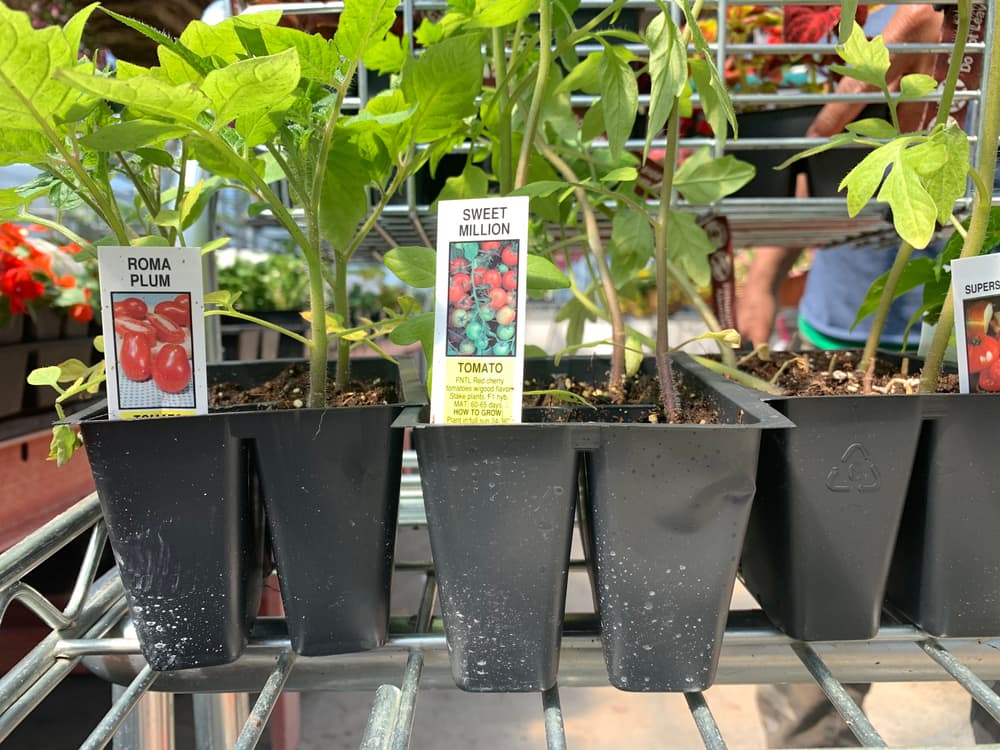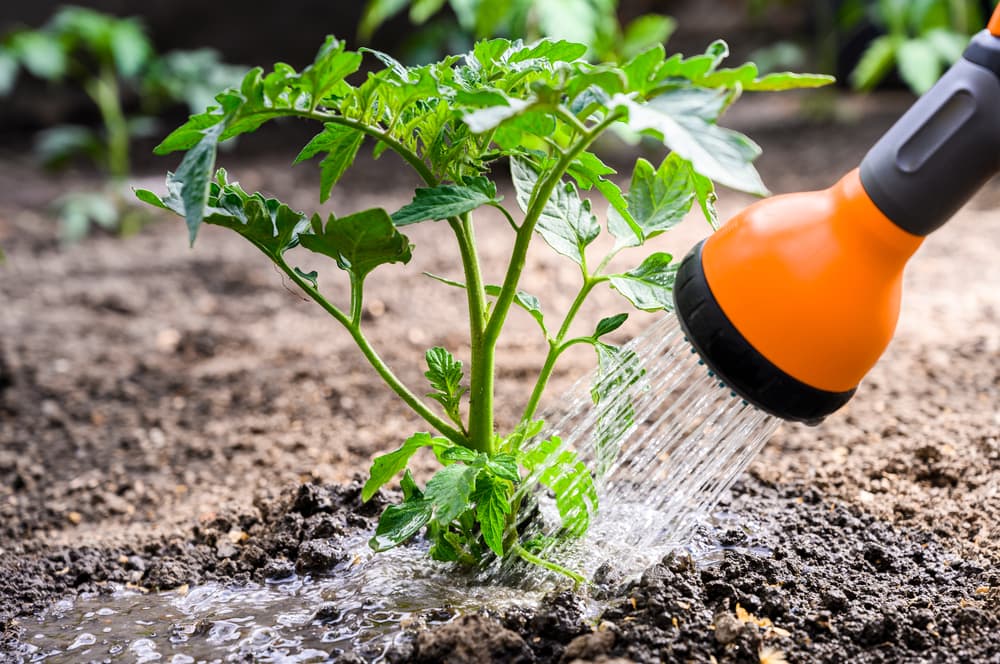The Pros And Cons Of Roma ‘Plum’ Tomatoes – With Plant Care And Harvesting Tips


Elizabeth is a Permaculture Garden Designer, Sustainability Consultant and Professional Writer, working as an advocate for positive change. She graduated from the University of St. Andrews with an MA in English and Philosophy and obtained a Diploma in Applied Permaculture Design from the Permaculture Association.
Reviewed By PETER LICKORISH

Peter is a Horticulture Lecturer and self-employed Horticulturist, with a passion for diverse areas of the industry - from garden design to the science behind plant growth and propagation. He has completed the Royal Horticultural Society’s Master of Horticulture (MHort) Award and lectures on RHS courses at Bedford College.
IN THIS GUIDE
Roma tomatoes are a popular paste tomato variety.
If you like to make tomato sauces and tomato paste then Roma tomatoes are a good option to consider.
“I’ve grown Roma tomatoes for the first time this year and in a wet summer where the risk of blight and mildew is high, they have been unaffected – a testament to their disease resistance,” shares Horticultural Consultant Peter Lickorish.
Overview
| Botanical Name | Solanum lycopersicum ‘Roma’ |
| Common Name(s) | Roma Tomatoes, Plum Tomatoes |
| Plant Type | Fruit |
| Native Area | Cultivated |
| Hardiness Rating | H1C |
| Foliage | Saw-like, jagged leaves with vines |
| Flowers | Yellow |
| When To Sow Indoors | January, February, March, April, May |
| Plant Out | June |
| Fruiting Months | June, July, August, September, October |
Sunlight
Preferred
Full Sun
Exposure
Sheltered
Size
Height
1 – 1.5M
Spread
0.5 – 1M
Bloom Time
June – September
Soil
Preferred
Fertile loam is ideal
Moisture
Moist but well-drained
pH
Neutral / Mildly-Acidic
Roma tomatoes, in spite of the name, were not created in Rome, or even in Italy.
They were actually first developed in the US, by the USDA Agricultural Research Service in 1955.1ARS in Your Pizza. (n.d.). U.S. Department of Agriculture: Agricultural Research Service. Retrieved March 27, 2023, from https://aglab.ars.usda.gov/explore-learn/ars-in-your-pizza/
The plant was created by breeding the ‘San Marzano’ heirloom tomato from Italy with a variety called ‘Pan American’.
Since 1955, plant breeders have selectively bred Roma tomatoes to improve their resistance to a range of common diseases even further.

Roma tomato plants produce oval, egg-shaped fruits, around 7-8cm long, which are red when they are fully ripe.
They have a lower water content and fewer seeds than most tomato varieties – and are considered to be excellent for making sauces, pastes, soups and for canning.
Roma Tomato Pros

- Open-pollinated variety (not a hybrid) so you can collect the seed.
- Resistance to fusarium and verticillium wilts.
- Fruits can mature in under three months.
- Since this is a semi-determinate variety, all mature at around the same time.
- Pruning and cordoning is not typically required.
- High yields of fruit can be produced on each plant in optimal conditions.
- Slightly green, nearly ripe fruits can continue to ripen after harvest.
- Great texture and flavour for sauces and pastes.
- Fruits hold up well when canning, bottling or preserving.
Roma Tomato Cons
- This variety is easy to buy in supermarkets. You might like to consider choosing an heirloom variety instead – something which you could not get your hands on so easily.
- Though it is open-pollinated, this is not usually considered to be an heirloom tomato.
- Roma tomatoes, and many other plum tomato varieties, may not fruit as prolifically or perform as well in a cooler climate. Gardeners in the UK may be better opting for more cold-tolerant cooking tomato varieties.
Some interesting options to consider for cooler regions of the UK which may perform better include:
- ‘Orange Banana’
- ‘Purple Ukraine’
- ‘Black Plum’
- ‘Kibit’s Ukrainian’
- ‘Amish Paste’
How To Grow Roma Tomatoes
Roma tomatoes can be grown in a greenhouse or polytunnel across most of the UK, and outdoors in warmer and sheltered areas.
Like other tomatoes, Roma tomatoes like a location which is as warm and sunny as possible.

They need a moist yet free-draining, fertile soil or growing medium and can be grown in containers or in the ground.
Roma tomatoes do not need an extensive cordon system, but will perform best when staked or caged to keep them supported and up off the ground.
Sowing
As with other tomatoes, it is best to sow Roma tomatoes as early as possible.
Since we have a relatively short growing season here in the UK, it is best to sow seeds indoors in late winter or early spring.
Indoors-grown plants are then potted up and hardened off before they are planted out into their final growing positions once the weather has reliably warmed – usually towards the end of May or in June.
Planting Out
When potting up or planting out your Roma tomatoes, bury each plant a little deeper in the soil or growing medium.
This encourages new roots to form from the now-buried stem, which makes for healthier and bitter root systems which will be more resilient and produce better yields.

On planting, mulch well around the plants with good-quality compost or well-rotted manure.
You can also then add a mulch of comfrey leaves, or the leaves of other dynamic accumulator plants which are rich in potassium and other nutrients.
Adding eggshells to your mulch can also help reduce issues with blossom end rot.
Remember to think about including companion plants (like basil, garlic and marigolds, for example) around your Roma tomatoes to aid in pest control in your organic garden.
Roma Tomato Plant Care
Watering
Make sure that you water consistently throughout the growing season.
Water deeply and not little and often to encourage strong and healthy roots.

Adjust watering depending on the temperatures and conditions and remember to water at the base of the plants.
Try not to wet the foliage as this makes it more likely for diseases to take hold and may cause issues like sun-scald.
Feeding
Fertilising tomato plants is essential for the best results.
But you most definitely do not have to use synthetic fertilisers, which can do more harm than good.
As well as mulching around your Roma tomatoes, you should also feed with a potassium-rich organic liquid plant feed every couple of weeks once the flowers and then the fruits form.
If your tomato plants are not setting fruit, read this guide for some solutions.
Harvesting
As mentioned above, Roma tomatoes are usually ready to harvest within three months.
Roma tomatoes are ready to pick once the fruits reach around 7-8cm in length, and are bright red all over.

If you are left with some tomatoes which are still slightly green at the end of the growing season, these should ripen up indoors, though tomatoes always taste best when ripened on the vine.
There are a number of steps that you can take to encourage your green tomatoes to ripen more quickly:
- You should consider adding extra protection to raise temperatures.
- Reduce then stop watering towards the end of the season.
- Remove undeveloped flowers and fruits to focus the plants on ripening those fruits already nearing maturity.
- And place ripe fruits under the plants which release ethylene gas which ripens tomatoes more quickly.
- You can also give plants a ‘shock’ by tugging to disturb their roots. This spurs the plant to produce viable seeds as quickly as possible.
Once you have harvested your Roma tomatoes, you can use them up right away in sauces, salsas, soups, ketchups, pastes and a range of other recipes.

You can also preserve them for later use using a range of recipes for a water canner.
Roma tomatoes might not be the most interesting or original tomato variety to grow in your garden, but there is good reason for their popularity in gardens and in a commercial setting.
So provided you can offer the right temperatures and conditions for optimal growth, this could be a good tomato variety to consider.
References
- 1ARS in Your Pizza. (n.d.). U.S. Department of Agriculture: Agricultural Research Service. Retrieved March 27, 2023, from https://aglab.ars.usda.gov/explore-learn/ars-in-your-pizza/
